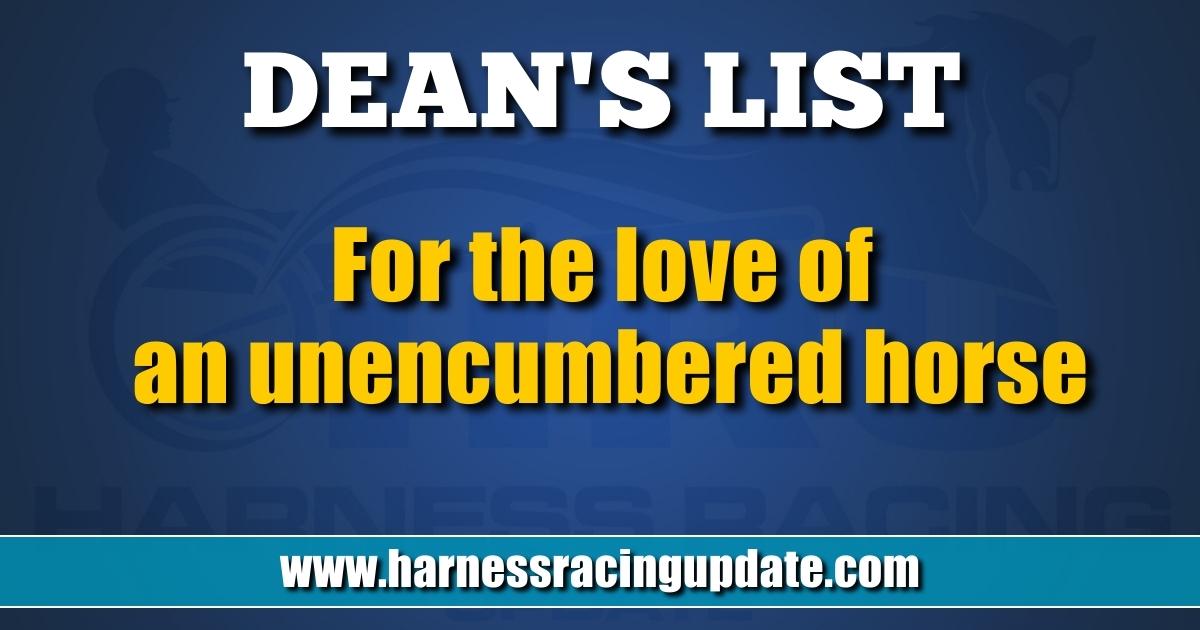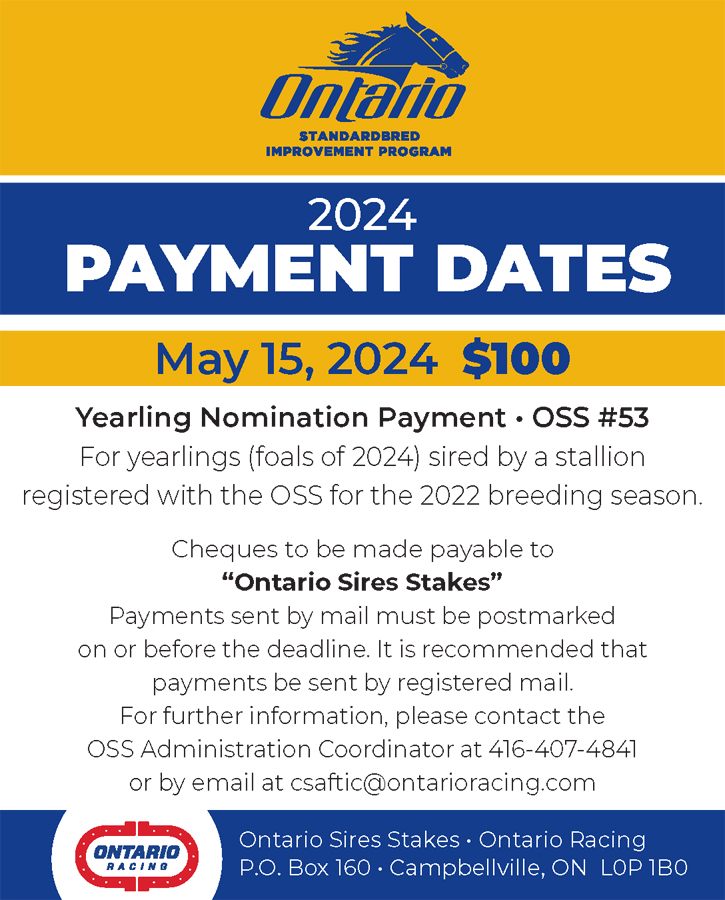

For the love of an unencumbered horse
by Dean A. Hoffman
“That horse is noblest, on whatever pasture bred, whose rush outstrips the rest, and whose dust is foremost upon the plain.”
From Drivers Up by Dwight Akers
I once stood in a racetrack stable area and watched a pacer walk to the track for a warm-up mile.
The horse wore knee boots, tendon boots, bell boots, brace bandages behind, blind bridle, shadow roll and its hobbles were tighter than a photo finish.
I said to myself, “I think there is a horse beneath all that rigging… but I’m not really sure.”
I cannot recall how the horse raced that night, but I did think that the trainer must’ve had a large bill from Big D’s Harness Shop.
Let’s acknowledge the obvious: the goal in racing is to win. As the quote above says: you want a horse whose dust is foremost; the horse leading the pack to the finish line. But if a horse needs equipment to race at its best, it should be used.
I just happen to think that horses are beautiful animals and I prefer to see their natural beauty without all the clutter of a lot of equipment.
Yes, I realize that in harness racing we’re dealing with racehorses, not show horses. The purpose is to win races, not beauty contests. But a horse is especially appealing to me if it can achieve success without being encumbered by a lot of equipment.
The late John F. Simpson Sr., a master trainer who won multiple Hambletonians and Jugs, raced many great horses and most of them were plainly rigged. Simpson, for example, seldom used the breast collar that was seemingly mandatory before the advent of the Buxton martingale.
I asked Simpson why he eschewed breast collars and he responded bluntly, “Just excess leather.”
Go back further in harness history and study photos of horses trained by legends such as Ben White and Fred Egan. Harness shops would go broke overnight if they had to rely on selling equipment to trainers with their skills.
I’m not a devotee of thoroughbred racing, but I do like the simplicity of their equipment. Often, it’s a saddle and a bridle and little more. You can appreciate the natural beauty of the breed.
One of my first harness heroes was Best Of All, winner of the 1967 Jug. He was purchased by Samuel Huttenbauer of Cincinnati, who was practically a surrogate grandfather to me. His trainer and driver Jim Hackett was very close to my father and they spoke often.
In December 1965, two months after Hackett selected Best Of All as a yearling for the Huttenbauer Stable, Hackett told my father, “Bob, this Good Time colt is just too good to be true. I’m almost afraid to take him to the track for fear he’ll get hurt.”
Best Of All was the champion of his freshman class and raced without boots, just a shadow roll and blind bridle.
The next year, however, Best Of All was facing some serious tests in the Triple Crown events contested over three half-mile track: Yonkers Raceway, Roosevelt Raceway, and Delaware, OH. Hackett was worried that Best Of All might tick a knee or a tendon on the tight turns, so he put knee boots and tendon boots on his prize colt just for protection. Best Of All won the Jug, but was second in the Messenger and Cane Pace and he never looked quite the same to me wearing all those boots.
By contrast, Nero was another horse that was a hero of my younger days. He had the most marvelous floating gait that I ever recall seeing. I was in love big time. But his gait was offset that Nero wore so much rigging on his head that he looked a bit like an alien.
My late friend Doug Ackerman, a Hall of Fame horsemen greatly respected by his peers, once trained Nero in California to fill in for his regular trainer.
“Nero couldn’t see,” Ackerman later told me. “He had so much on his bridle that when we came to the first turn of the track, he would have kept going straight out into the parking lot if I didn’t guide him.”
Yes, I prefer the horse whose dust is foremost upon the plain or the racetrack, but the most appealing winner to me is the one least encumbered by excess equipment.














